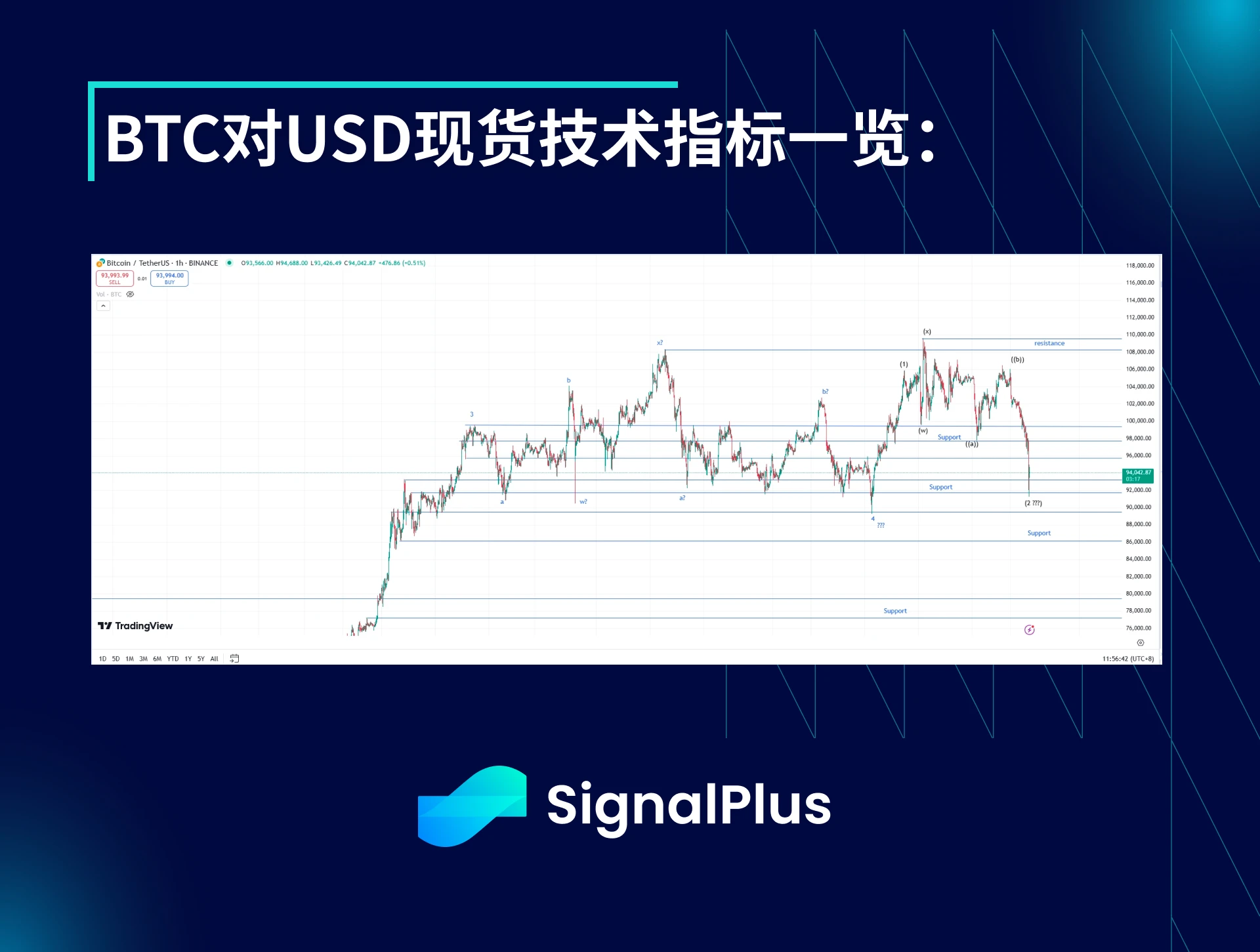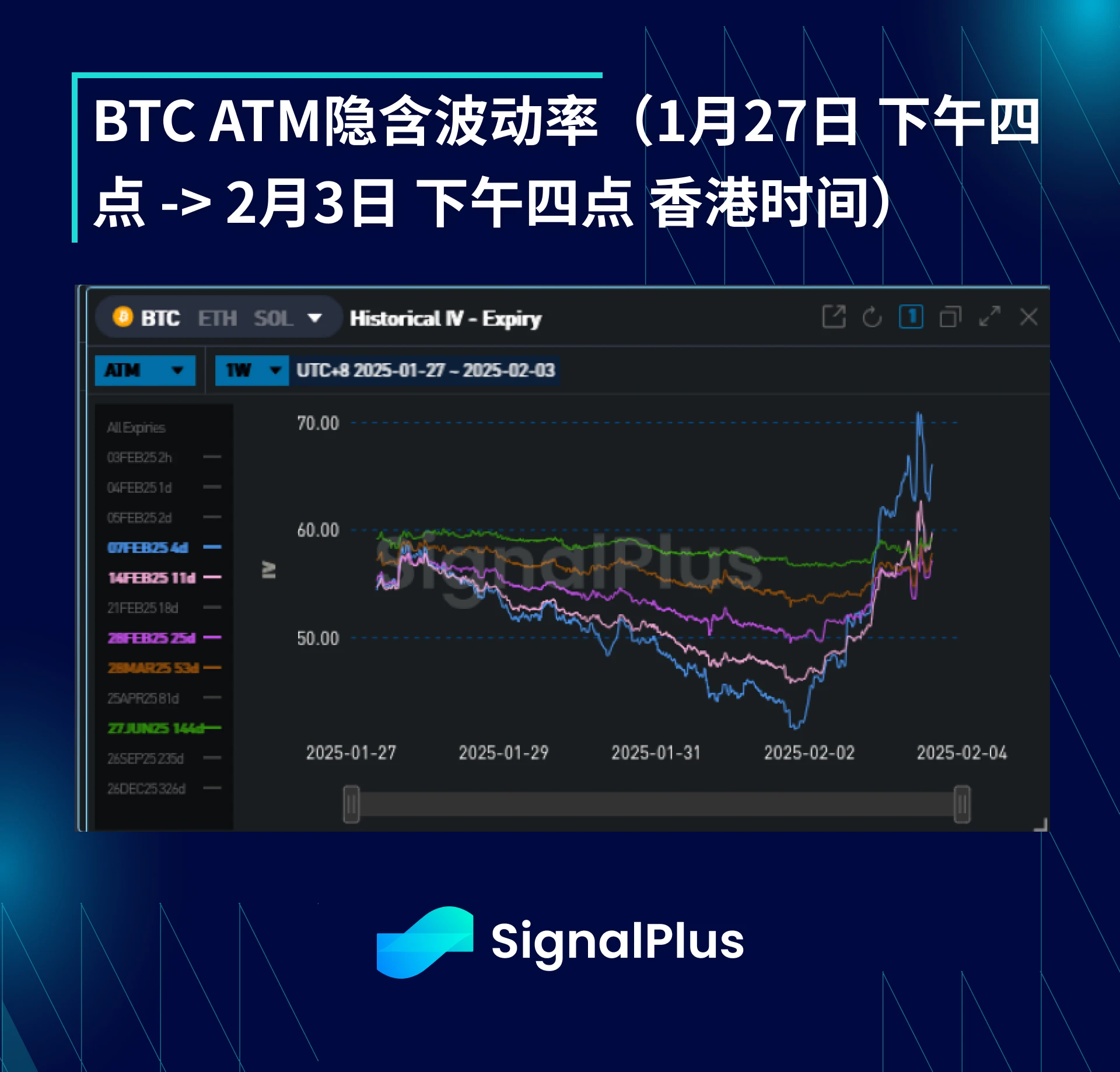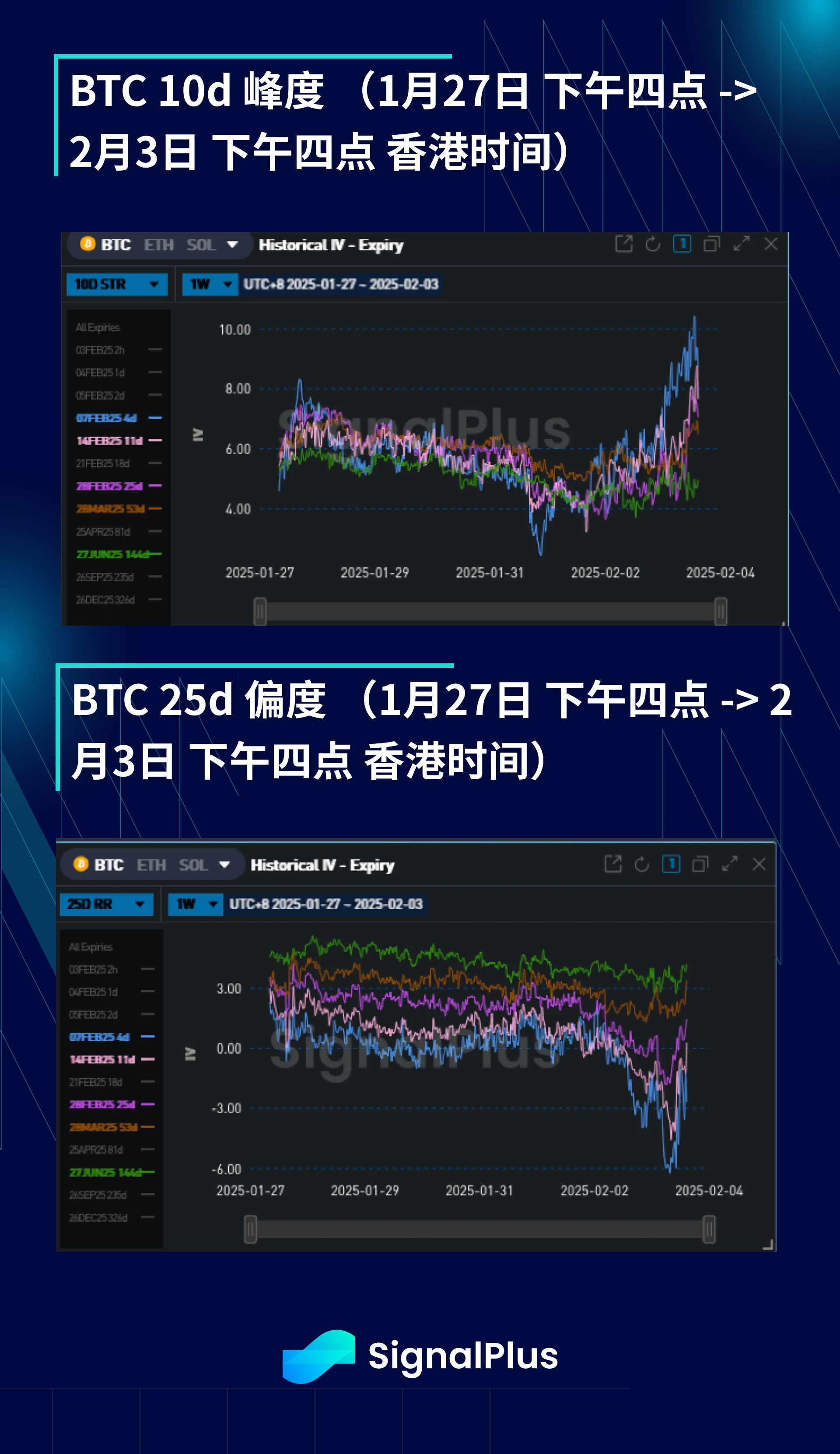
Key metrics: (January 27, 4pm -> February 3, 4pm Hong Kong time)
BTC/USD fell 3.8% ($98.8k -> $95.1k), ETH/USD fell 16.0% ($3.07k -> $2.58k)
BTC to USD spot technical indicators at a glance

BTC/USD managed to bounce off the key support level we marked at $98k early last week, and tried to test $106k several times in the following week, but ultimately failed to gain enough momentum to form a new upward trend. By the weekend, due to Trumps tariff news and the market holding weak longs above $102k, the price of the coin fell all the way to $98k, and then extended its downward trend and briefly fell to $91k.
It is tricky to judge the short term here. If the price falls below $90k, it will eliminate the previous wave 4 rise (as shown in the figure) and trigger us to question the longer-term trajectory timeline of the spot. The greater support level will be between $89k and $86k, and if it falls below, it will expose us to support levels of $75k or even lower.
Market Theme
For most of last week, the market seemed to have digested the impact of DeepSeeks release of the R 1 model. Although necessary adjustments did occur in stocks like NVDA, overall US technology/AI stocks gradually recovered their losses this week, also due to Powells slightly dovish statement at the FOMC meeting on Wednesday. However, the market began to fluctuate again over the weekend, as Trump fulfilled his promise and began to increase tariffs on Mexico, Canada and China, dashing some peoples hopes that the recent conciliatory rhetoric might lead to a pause in tariff increases.
From now on, the key narrative for the market is likely to be how to react to this global trade war. There is still considerable disagreement in the market, with some players believing that this reaction will only be short-lived given that the market has expected the increase in tariffs. However, others emphasize that the Trump administration is seriously considering withdrawing from global affairs and may retaliate with higher tariffs. With such disagreements, it looks like we are in for a period of localized turbulence until the market regains its balance and reasonably prices this risk.
Because digital currency was the only tradable asset when the tariff news was released over the weekend, the Bitcoin market was under tremendous pressure, falling to $96,000 before the start of the Asian session on Monday. Along with the heavy pressure after the opening of traditional finance, the cryptocurrency market also triggered another round of liquidation, and Bitcoin plummeted to $91,000. At the same time, Ethereum once again showed that it is still a small coin. After breaking through the key $3,000 support level, it plummeted nearly 20% and dropped to a price as low as $2.5,000.
BTC Implied Volatility

Despite a flurry of volatility around the US stock market (due to the revaluation of AI stocks after the release of DeepSeek) and the Feds speech in the middle of the week, Bitcoins realized volatility this week remained low and fluctuated around 40-45, compared to implied volatility, which was as high as 50 at the beginning of the week. This may be partly due to the Chinese New Year from Wednesday to Friday (resulting in slower volatility in the Asian time zone), and the price of the currency remained in a comfortable range of $98k-106k for most of the week, which naturally depressed realized volatility. However, the tariff news over the weekend triggered a fierce price breakout and triggered a round of liquidations, pushing both realized and implied volatility higher. Implied volatility for the February 7 expiration date briefly rose from a low of 42 to 71 over the weekend, and then fell back to around 65.
At the far end of the curve, implied volatility generally continues to move lower. As spot prices continue to lack momentum to hit above $105,000, bets on the direction of the price are withdrawn, and we have seen a lot of liquidation above the March expiration date in the market. At the same time, as the Trump administrations working group is likely to promote plans to save cryptocurrencies as early as the second half of this year, the tail risk of explosive price growth in the short term has been eliminated. Nevertheless, the implied volatility of these far-term maturities was still pulled higher on Monday by the increase in realized volatility, and it is also preparing for local price turbulence after the arrival of the trade war in the macro context.
BTC Kurtosis/Skewness

Skewness on the short-term skewed sharply to the downside over the weekend as spot prices threatened to break through the local support level of $98-100k, triggering liquidations and causing high realized volatility. However, after the liquidation of short positions, skewness quickly recovered from the lows as spot prices rebounded to $94k. On the far end of the term structure, skewness remained relatively stable, although implied volatility did rise as the coin price fell.
The kurtosis price is quite stable outside the short term. In the short term, it is still due to the demand for the lower wing after the price of the currency breaks through, which leads to a sharp rise in the kurtosis in the short term.
Good luck to everyone on your trading this week/month!

You can use the SignalPlus trading vane function at t.signalplus.com to get more real-time crypto information. If you want to receive our updates immediately, please follow our Twitter account @SignalPlusCN, or join our WeChat group (add the assistant WeChat, please delete the space between English and numbers: SignalPlus 123), Telegram group and Discord community to communicate and interact with more friends. SignalPlus Official Website: https://www.signalplus.com










